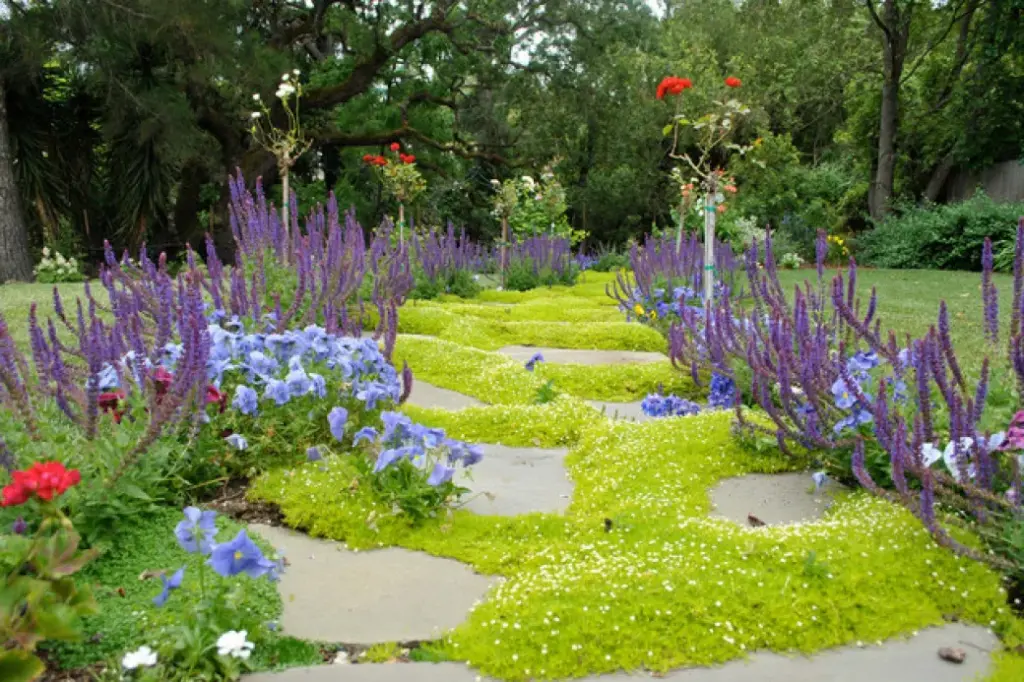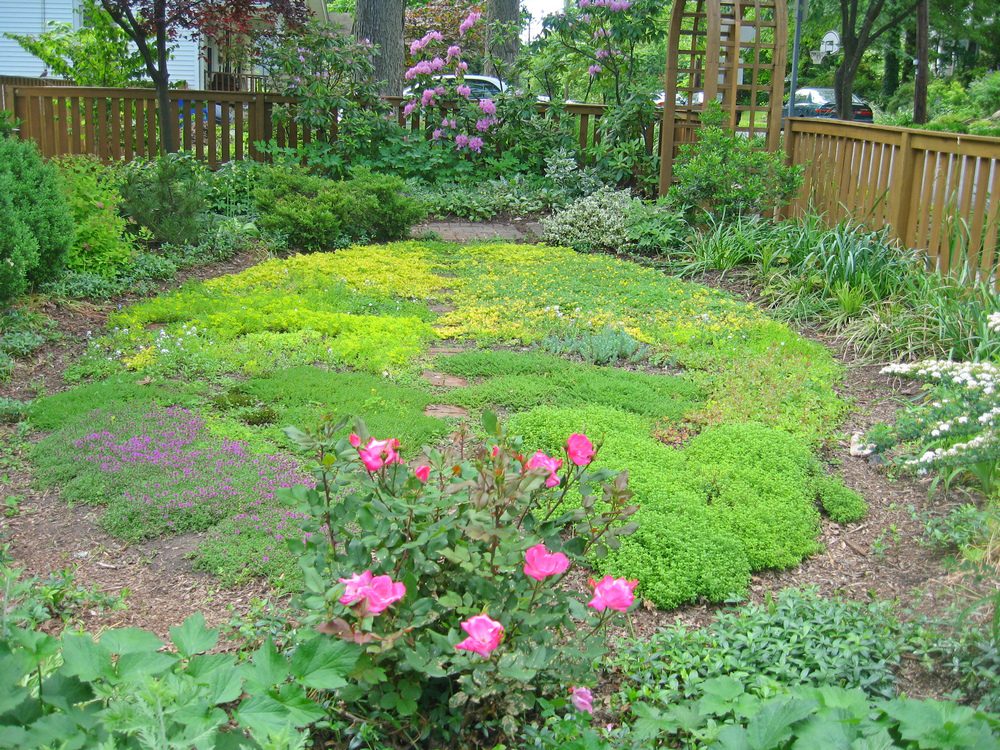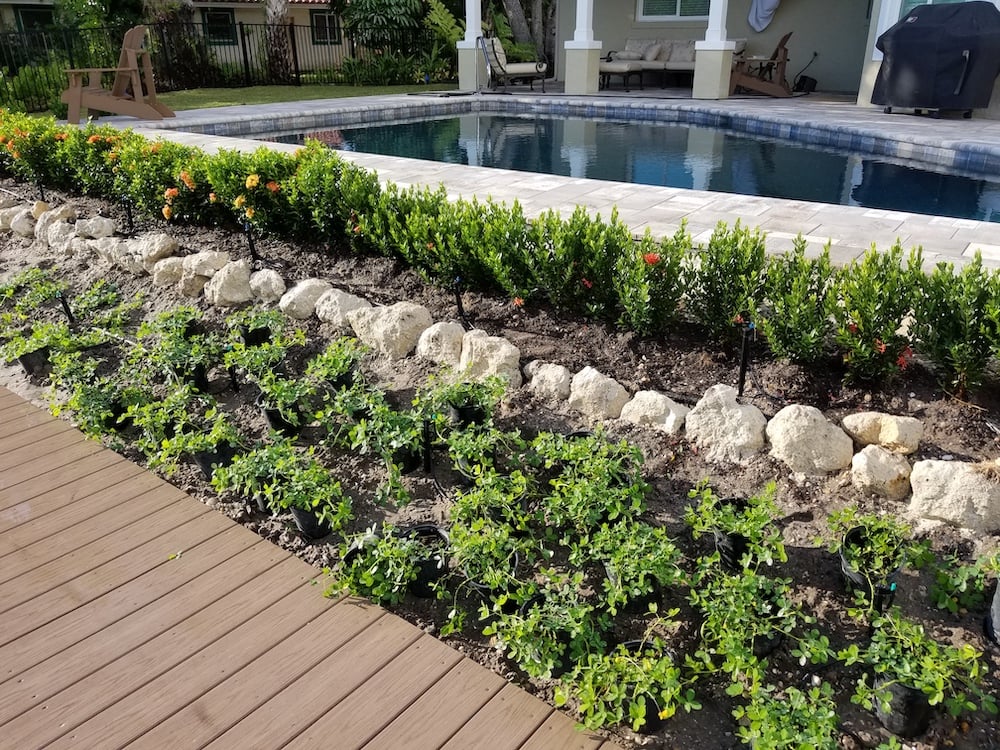Maintaining a lush green lawn can be a constant challenge—especially in shaded, dry, or high-traffic areas where grass struggles to grow. If you’re tired of battling brown patches or constant watering, it’s time to consider using ground covers to replace grass in these trouble spots.
Ground covers are low-maintenance lawn alternatives that not only thrive where grass fails but also offer a variety of textures, colors, and benefits. In this blog, we’ll walk you through the steps to replace grass with ground covers, explore the best plant options, and share tips for successful installation and care.


Why Replace Grass with Ground Covers?
Here are a few reasons why more homeowners are turning to ground cover alternatives to grass:
✅ Low Maintenance: No mowing, no fertilizing, and less watering.
✅ Water Conservation: Many ground covers are drought-tolerant.
✅ Better for Shady Areas: Certain plants thrive in low-light conditions where grass dies.
✅ Erosion Control: Ideal for slopes and areas prone to runoff.
✅ Eco-Friendly: Reduces reliance on gas-powered lawn equipment and chemical treatments.
Identifying Trouble Spots in Your Yard
Before you replace grass with ground covers, identify the problem areas. These typically fall into one of the following categories:
Shady Areas: Under large trees or along the north side of buildings.
Dry or Sloped Areas: Where soil dries out quickly or water runs off.
High-Traffic Zones: Paths, play areas, or pet zones.
Poor Soil Conditions: Sandy, clay-heavy, or compacted soil.
Once you’ve mapped out the trouble zones, you can choose the best grass replacement for shady areas or other specific conditions.
Best Ground Covers to Replace Grass
Lorem ipsum dolor sit amet, consectetur adipiscing elit. Ut elit tellus, luctus nec ullamcorper mattis, pulvinar dapibus leo.
Fragrant, edible, and blooms in summer.
Great between stepping stones or in dry zones.
Low-growing and foot-traffic friendly.
Improves soil nitrogen naturally.
Stays green with less water.
Ideal for moderate foot traffic.
Grass-like appearance without the upkeep.
Tolerates drought and poor soils.
Fast spreader, perfect under trees.
Small white flowers and fragrant leaves.
Thrives in dry, sunny conditions.
Available in various textures and colors.
Great for shaded areas with decent moisture.
Spreads fast and adds beautiful purplish hues.
How to Replace Grass with Ground Covers: Step-by-Step
Here’s a quick guide to make the transition from grass to a thriving ground cover:
Use a sod cutter, shovel, or solarization method to kill existing grass.
Remove roots to prevent regrowth.
Loosen compacted soil.
Mix in compost to improve drainage and nutrition.
Test pH if needed.
Match plant type to sun/shade and soil condition.
Check spacing and growth habit.
Space plants appropriately (check plant tag for spacing).
Water deeply after planting.
Apply mulch to suppress weeds and retain moisture.
Keep soil moist during the first 4–6 weeks.
Once established, most ground covers need far less water than grass.
Tips for Success with Ground Cover Alternatives
Start small: Test in one trouble spot before going yard-wide.
Edge the area: Use stone or steel edging to prevent spreading into unwanted zones.
Mix varieties: Combine complementary ground covers for seasonal interest and resilience.
Control weeds early: Young ground covers are more vulnerable to weed competition.
Eco-Friendly and Budget-Smart Lawn Care
Swapping grass for ground covers is a win for your wallet and the environment. You’ll save on water bills, eliminate the need for chemical fertilizers, and reduce your carbon footprint by retiring the lawnmower.
In areas where traditional lawns are banned or restricted due to drought, drought-tolerant ground cover solutions like these are not only practical—they’re often legally required. Make the switch now and future-proof your landscape.
Final Thoughts
By using ground covers to replace grass in trouble spots, you can transform your yard into a lush, low-maintenance, and eco-conscious space. Whether you’re dealing with shade, slope, or sun-scorched patches, there’s a ground cover plant that’s perfect for the job.
Say goodbye to brown patches and hello to a vibrant, sustainable alternative that will make your yard the envy of the neighborhood!


